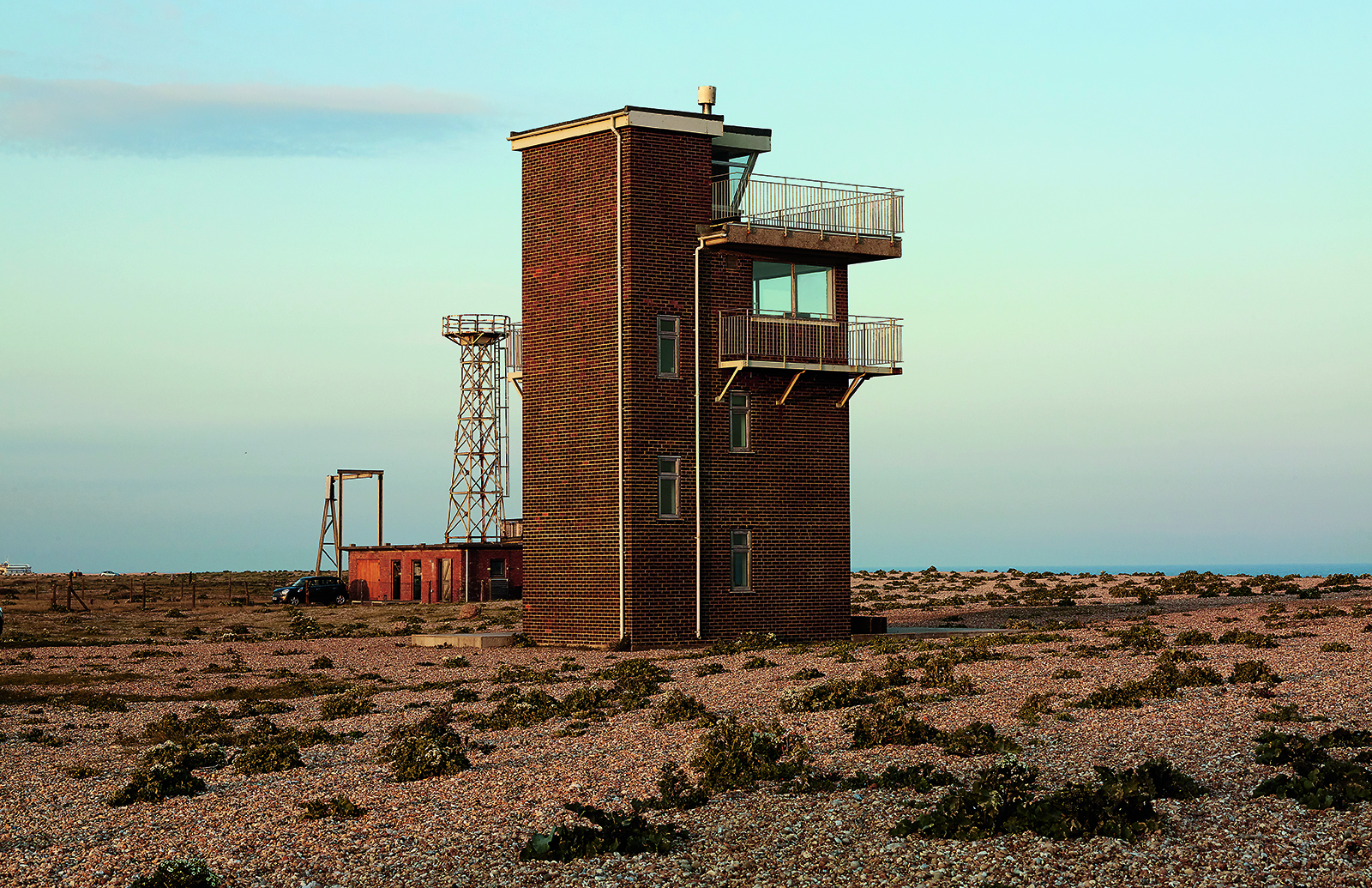Dungeness’s unique, eclectic and extreme landscape has drawn artists and architects to it in recent years, intrigued by the dichotomy of nature rubbing shoulders with nuclear power along its shingled shoreline. While open and exposed to the elements, it’s also withdrawn and private – a hamlet that’s home to little more than a hundred homes, though filled with a broad mix of people.
New book Dungeness: Coastal Architecture by journalist Dominic Bradbury and photographer Rachael Smith shines a spotlight on The Ness and its inhabitants and its evolving legacy of adaptive reuse.
Living Without Boundaries
The hamlet has a long tradition of borderless living. No barriers, fences or gates hold back the tide or people, inviting nature to reclaim man’s encroachment through a gradual rewilding process. The ritual of the fishing boats coming and going marks the passage of time as regularly as the rhythmic hum emanating from the nuclear power station, which looms over the shoulder of the scattered cabins and beach huts.
‘There is something quite magical about being there in the early morning, seeing sunbeams burst through the clouds at first light, and the feeling of stillness at sunset,’ says Smith. ‘It’s a photographer’s dream to shoot, fabulous and unique architecture, and a great mixture of old and new.’

Artist Derek Jarman is perhaps the headland’s most famous resident. He described the Ness as a ‘desolate landscape’ where ‘the silence is broken by the wind, and the gulls squabbling around the fishermen bringing in the afternoon catch.’
And while it’s touted as ‘Britain’s only desert’, Dungeness teems with bird, insect and plant life, with the stony landscape gradually becoming greener and more vibrant further inland. Rainfall is certainly not a rarity either.
A postwar landscape
‘I have been fascinated by Dungeness ever since my first visit when I was mesmerised by the coastline, the landscape and its unique houses,’ says Bradbury, who first encountered Dungeness as a student. He deep-dived into 16 of its most adventurous architectural case studies for his book, Dungeness: Coastal Architecture, intersecting critical moments in the estate’s development.

Mingled amongst generational fishers’ cottages are conversions of wartime buildings, technological structures from the 1950s and ’60s, and other redundant architecture such as the Coastguard Station. All have now been restored and revived and are tinged with inventiveness, and some made famous as a location in television and film.
New builds rarely happen (limited in number due to heavy restrictions), but those that do also carry the vernacular and echo of the older structures. In such a small community and exposed landscape, any change is noticeable and often controversial. (There was once a heated debate over plans to replace the hamlet’s classic Giles Gilbert Scott-designed red phone box with a more ‘contemporary’ version.)

During the 1960s, the Ness became the site of the early generation of Magnox nuclear power stations. While the public was reassured about the safety of the reactors, it was decided to build them in sparsely populated areas of the country. Now obsolete, Dungeness A began shutdown in 1984 though its total demolition will take until the end of this century. Similarly, corrosion problems at Dungeness B led to a shutdown in 2018. Jarman compared the power station to the Land of Oz; its epic presence and otherworldly design rising over the horizon, surrounded by mysterious rituals and mechanisms, ringed with guards.
Adaptive reuse

Inside the Radar Station, transformed by architects MS-DA and Johnson Naylor. Photography: Rachael Smith

Inside Yen-yen Juergen House. Photography: Rachael Smith

Image: Pavilion
Around the same time, a new coastguard station was built, and it was occupied by coastguards until the late 1990s and the advent of satellite navigation. However, unlike its nuclear neighbour, it would find a second life courtesy of Magnum photographer and journalist Peter Marlow and his partner, designer Fiona Naylor.
Most of the converted station’s interiors have a purity and restraint that allow the pervading seascape to remain the focal point. Huge picture windows became frames for views of the shoreline, where one can sit and contemplate the world.
Every building is precious in a small community, and Naylor and Marlow’s legacy is reviving neglected and derelict buildings. These include the Coastguard Station, the Pump Station – available to rent through Bloom Stays – and her own family home, the Experimental Station. The shingled Kent headland is a muse for creatives and its postwar buildings are finding second lives.

‘What we have done is really take empty buildings that most people weren’t interested in and give them a new life,’ Naylor explains. ‘They were very unloved and the places that nobody wanted. Perhaps to a lot of people, they are simply too utilitarian, but for me, that’s the exciting bit. There is something in me that wants to take something that is not perceived as pretty and turn it into something useful. It’s about stripping it back to its essence and letting it express itself. They might not be castles or anything like that, but they are fascinating buildings with interesting histories.’
Outwardly, Radar seems enigmatic and a little mysterious. The Decca Radar Company used the original, prefabricated double shed as a research base. Locals labelled it the ‘Marconi Wireless Shed,’ believing that Guglielmo Marconi used it as a radio signal station during the 1890s. Now, it offers a private sanctuary combined with some modern comforts for weary travelers.
‘There is a sense of delight in it,’ says Naylor, who collaborated on Radar’s adaptive reuse with architect Michel Schranz. ‘It’s about things that you experience and touch and I love it when people stay at the house and discover these things for themselves. With the design, we just wanted everything that you experience here to be a pleasure and it is very calming.’























